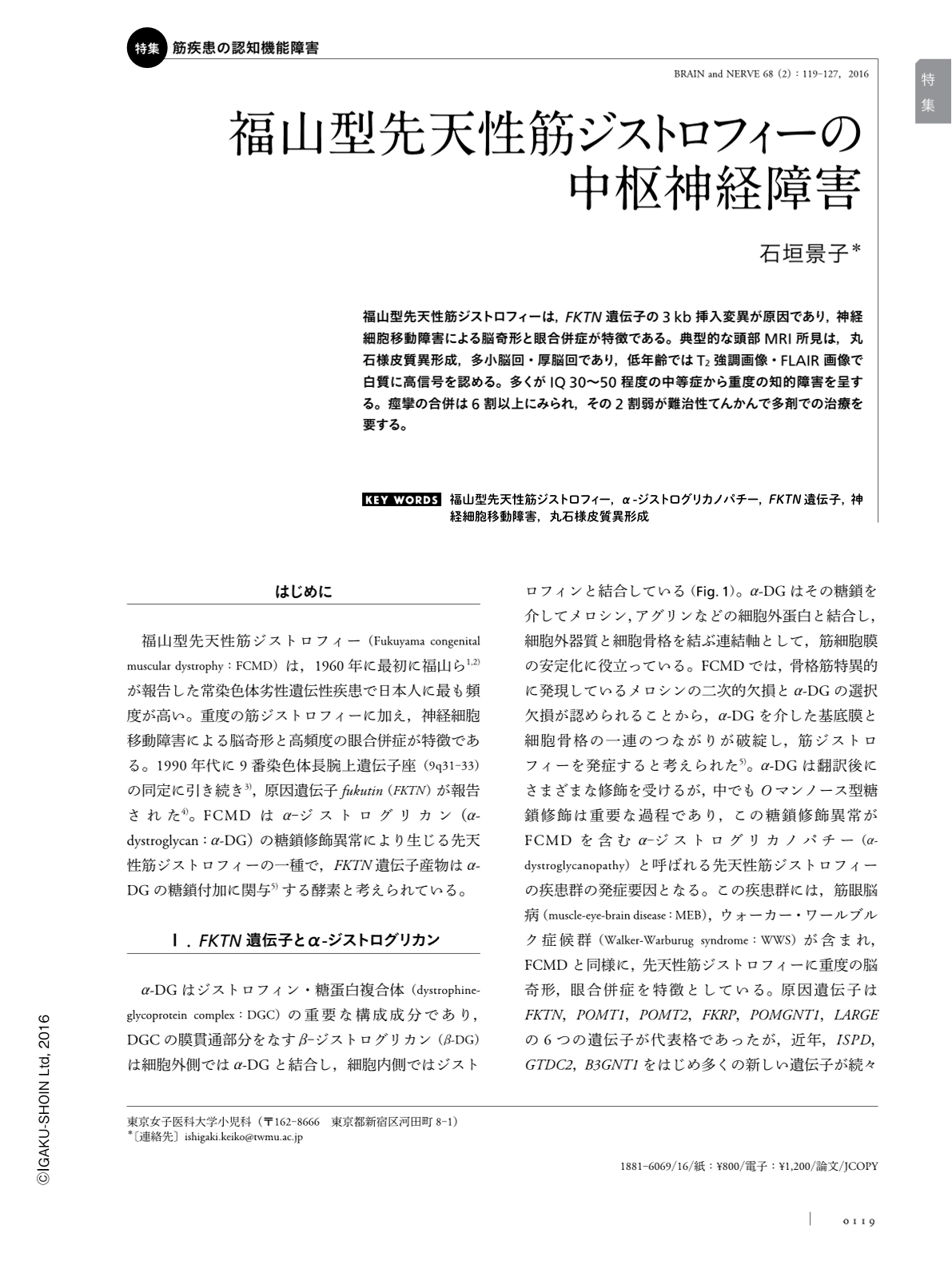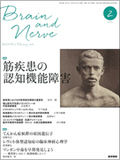Japanese
English
- 有料閲覧
- Abstract 文献概要
- 1ページ目 Look Inside
- 参考文献 Reference
福山型先天性筋ジストロフィーは,FKTN遺伝子の3kb挿入変異が原因であり,神経細胞移動障害による脳奇形と眼合併症が特徴である。典型的な頭部MRI所見は,丸石様皮質異形成,多小脳回・厚脳回であり,低年齢ではT2強調画像・FLAIR画像で白質に高信号を認める。多くがIQ30〜50程度の中等症から重度の知的障害を呈する。痙攣の合併は6割以上にみられ,その2割弱が難治性てんかんで多剤での治療を要する。
Abstract
Fukuyama congenital muscular dystrophy (FCMD), the second most common muscular dystrophy in the Japanese population, is an autosomal recessive disorder caused by mutations in the fukutin (FKTN) gene. The main features of FCMD are a combination of infantile-onset hypotonia, generalized muscle weakness, eye abnormalities and central nervous system involvement with mental retardation and seizures associated with cortical migration defects. The FKTN gene product is thought to be necessary for maintaining migrating neurons in an immature state during migration, and for supporting migration via α-dystroglycan in the central nervous system. Typical magnetic resonance imaging findings in FCMD patients are cobblestone lissencephaly and cerebellar cystic lesions. White matter abnormalities with hyperintensity on T2-weighted images are seen especially in younger patients and those with severe phenotypes. Most FCMD patients are mentally retarded and the level is moderate to severe, with IQs ranging from 30 to 50. In our recent study, 62% of patients developed seizures. Among them, 71% had only febrile seizures, 6% had afebrile seizures from the onset, and 22% developed afebrile seizures following febrile seizures. Most patients had seizures that were controllable with just 1 type of antiepileptic drug, but 18% had intractable seizures that must be treated with 3 medications.

Copyright © 2016, Igaku-Shoin Ltd. All rights reserved.


